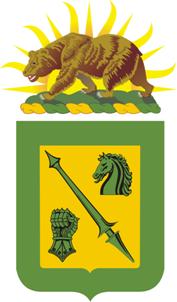Related Research Articles
The 67th Armored Regiment is an armored regiment in the United States Army. The regiment was first formed in 1929 in the Regular Army as the 2nd Tank Regiment (Heavy) and redesignated as the 67th Infantry Regiment in 1932. It first became the 67th Armor in 1940. The regiment participated in World War I, World War II, Desert Storm/Desert Shield, Operation Iraqi Freedom, Operation Enduring Freedom, Operation Spartan Shield, Operation Inherent Resolve, Operation Resolute Support, and Operation Freedom's Sentinel.
The 308th Armored Cavalry Regiment was a Minnesota-based reconnaissance unit of the United States Army Organized Reserve Corps, which briefly existed after World War II. Its 1st Battalion traced its heritage back to a World War II Tank destroyer battalion.
The 305th Armored Cavalry Regiment was an Indiana-based reconnaissance unit of the United States Army Organized Reserve Corps, which briefly existed after World War II.

The 306th Armored Cavalry Regiment was a District of Columbia-based reconnaissance unit of the United States Army Organized Reserve Corps that briefly existed after World War II. The 306th ACR later became a group before being inactivated in 1959.
The 304th Armored Cavalry Regiment was a Massachusetts-based reconnaissance unit of the United States Army Organized Reserve Corps, which briefly existed after World War II. It was constituted in 1948 and partially organized from existing units before being inactivated in 1950 and disbanded in 1952.

The 303rd Armored Cavalry Regiment was a New York-based reconnaissance unit of the United States Army Organized Reserve Corps that briefly existed after World War II.
The 302nd Armored Cavalry Regiment was a New York-based reconnaissance unit of the United States Army Organized Reserve Corps, which briefly existed after World War II. Constituted in 1948, it was partially organized later that year and inactivated in 1950.
The 301st Armored Cavalry Regiment was a Georgia-based reconnaissance unit of the United States Army Organized Reserve Corps, which briefly existed after World War II. Constituted in 1948, it was partially organized in 1949 before being disbanded in 1950.
The 300th Armored Cavalry Regiment was a Texas-based reconnaissance unit of the United States Army Organized Reserve Corps, which briefly existed after World War II. It was constituted in 1948 and partially organized from existing units before being inactivated in 1950 and disbanded in 1952.
The 309th Armored Cavalry Regiment was a Michigan-based reconnaissance unit of the United States Army Organized Reserve Corps, which briefly existed after World War II.
The 310th Armored Cavalry Regiment was a California-based reconnaissance unit of the United States Army Organized Reserve Corps, which briefly existed after World War II. It was constituted in 1948, partially organized from existing units in 1949, and inactivated in 1950.
The 311th Armored Cavalry Regiment was a Texas and Louisiana-based reconnaissance unit of the United States Army Organized Reserve Corps, which briefly existed after World War II. It was constituted in 1948, partially organized from existing units later that year, and inactivated in 1950.
The 314th Armored Cavalry Regiment was a Tennessee-based reconnaissance unit of the United States Army Organized Reserve Corps, which briefly existed after World War II. It was constituted in 1948, partially organized from existing units in 1949, and inactivated in 1950.
The 317th Armored Cavalry Regiment was an Illinois-based reconnaissance unit of the United States Army Organized Reserve Corps, which briefly existed after World War II. It was constituted in 1948, partially organized from existing units, and inactivated in 1950.
The 320th Armored Cavalry Regiment was an Ohio-based reconnaissance unit of the United States Army Organized Reserve Corps, which briefly existed after World War II. It was constituted in 1948, partially organized from existing units in 1949, and inactivated in 1950.

The 240th Cavalry was a United States Army parent cavalry regiment, represented in the Kentucky Army National Guard by Troop A, 240th Cavalry, part of the 149th Armored Brigade, stationed at Owensboro.

The 237th Cavalry Regiment was a United States Army parent cavalry regiment, represented in the Ohio Army National Guard by Troop A, 237th Cavalry, part of the 73rd Infantry Brigade with headquarters at Cincinnati.

The 111th Armored Cavalry Regiment was a light armored cavalry regiment that was part of the California Army National Guard, briefly active during the early years of the Cold War.
References
Citations
- ↑ "Town Topics" . The Bee. 10 July 1950. p. 13. Retrieved 30 July 2017– via Newspapers.com.
- ↑ "Town Topics" . The Bee. 14 November 1949. p. 11. Retrieved 30 July 2017– via Newspaperarchive.com.
- ↑ Sawicki 1985, p. 376.
Bibliography
- Sawicki, James A. (1985). Cavalry regiments of the US Army. Dumfries, Virginia: Wyvern Publications. ISBN 9780960240463.